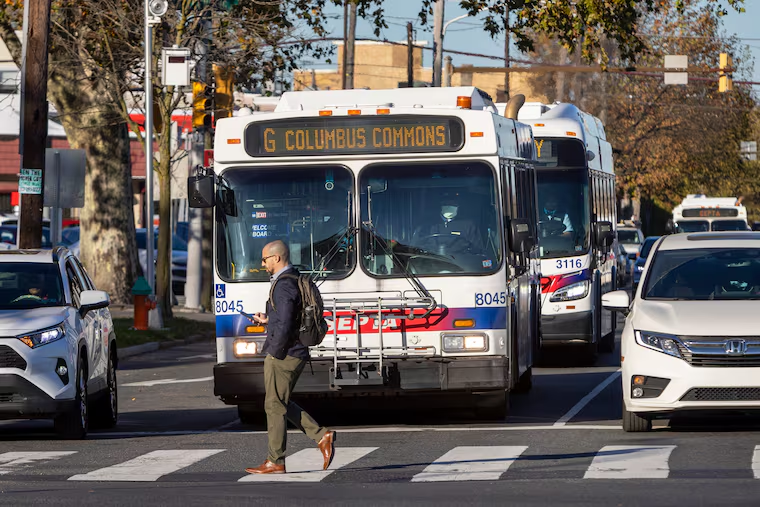SEPTA has finished plans for bus system overhaul — finally!
After six years of planning, the transit agency is ready to unveil its redesigned bus route system, the first in SEPTA's history.

Revisions are done and SEPTA now has a final draft of the first realignment of its bus network in six decades, more than six years after planning began and several sometimes testy rounds of public engagement.
Intended to modernize the system and make service more frequent, the new Bus Revolution draft makes changes to two earlier versions. The plan aims to trim the overall number of routes; to increase by 30% the number of routes with 15 minutes or fewer between buses; and would create several new bus routes, top SEPTA officials said this week.
SEPTA posted the updated plan on its website Friday so people can begin to view how their own travel might change.
Next comes a lightning round of 10 public hearings spread over the last two weeks of September, run by an independent examiner, to collect formal testimony on the proposal. That is the final step before SEPTA’s board can vote whether to approve it.
“We’re not anticipating any major relitigation of the network at this point,” said Brandon Miller, senior operations planner for SEPTA, who has been working on the project.
“Through each iteration that we’ve released we’ve been responding to concerns that our customers have raised,” he said.
Miller noted the transit agency spent two years listening to the public’s ideas, using them to help create the first draft (released in October 2022) and then to make changes to that plan after more public reaction.
The most recent proposal has a total of 106 fixed routes, down from the current 125. It has 43 frequent routes compared to 33 in the existing network. In eight suburban zones, SEPTA would run on-demand bus service, similar to Uber or Lyft, in areas where there is demand for transit but not enough to sustain a robust schedule.
The first version contained substantial changes, encouraging transfers to frequent routes from less frequent ones, as well as to the Broad Street Line and the Market-Frankford El. Many pushed back, saying they wanted to keep familiar one-seat bus rides. Some said at hearings they especially were wary of having to use the subway or El.
The latest plan does not address the question of spreading out bus stop locations. SEPTA’s bus system has the closest stop spacing in North America, according to Miller. Large numbers of stops clustered together can slow bus service.
But throughout the process, many people have expressed worry that they would have to walk much further.
“Once we get the network down, then we’ll go back and we’ll look at the ideal stop-spacing, and see if there are locations where we can improve our service times and reliability by consolidating stops or removing a stop,” said Jody Holton, SEPTA’s chief planning and strategy officer.
She said the latest plan, as it stands, would increase by 64% the number of people within a 10-minute walk of a frequent bus route.
SEPTA began studying bus redesign efforts after ridership began to decline in the middle of the last decade — it went down 20% between 2011 and 2019, for instance — a drop attributed to slow speeds, problems with reliability, and competition from ride-sharing companies.
As the pandemic took hold, demand for the peak hour bus rides associated with traditional commutes has plummeted while increasing during the midday and night hours, when buses are scheduled to run more infrequently.
This story has been updated to reflect that SEPTA has the most closely spaced bus stops in North America.